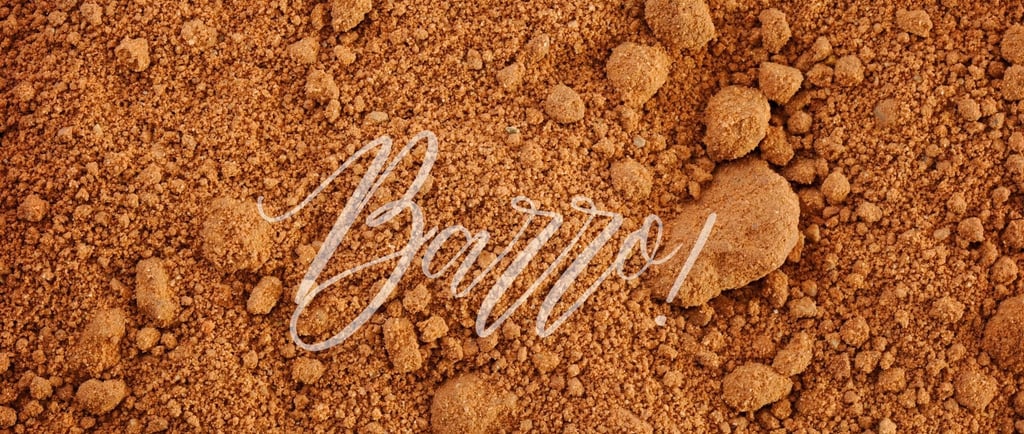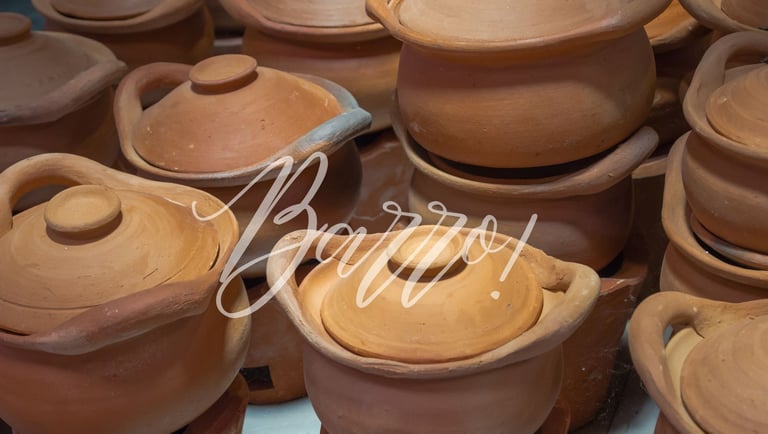Clay: A Living Essence in Traditional Maya and Mexican Cuisine
Discover why clay is not just a utensil, but an essential ingredient in traditional Maya and Mexican cuisine. In this article, we explore how clay pots, pans, and griddles transform the flavor of dishes, preserve ancestral techniques, and keep the connection between fire, earth, and culture alive. Cooking with clay is tasting history.
COCINA LOCAL Y ANCESTRAL
Ro Madrid
7/11/20253 min read


The Clay: Living Essence in Traditional Maya and Mexican Cuisine
In the traditional gastronomy of Mexico, each ingredient, technique, and utensil has a deep history that connects the present with the past. One of the oldest and most valuable elements in Mexican cuisine—especially in Maya culture—is clay. Not only as a cooking material but also as a component that directly influences the flavor, texture, and soul of the dishes.
Since pre-Hispanic times, clay has been the ideal material for making pots, casseroles, griddles, jars, and molcajetes, essential pieces in the indigenous cuisine of Mesoamerica. Its use has not been entirely replaced by modern materials, and this is no coincidence: clay not only preserves the tradition but also transforms the flavor.
An Ingredient More in the Recipe
In traditional Maya cuisine, as in many regional Mexican cuisines, cooking in clay is not the same as cooking in metal or glass. Clay has unique properties: its porosity allows for slow, constant, and even cooking, which helps enhance the natural flavors of the ingredients and soften textures.
When preparing a dish like mucbipollo (a buried tamale typical of Hanal Pixán) or a pib of cochinita, the clay pot plays an essential role. It absorbs some of the liquid, regulates the temperature, and adds a earthy, warm, and deeply authentic note that cannot be achieved with any other type of pot.
Even for simple cooks—like beans, moles, broths, or sauces—a well-cured clay saucepan changes the final result. The aromas are more complex, flavors integrate better, and the food retains a warmth that evokes home, fire, and roots.
Clay Preserves the Fire of the Past
For the Maya and other indigenous peoples of Mexico, fire is a sacred element. Cooking with clay is a way to honor that connection with the elements: earth, water, air, and fire. The clay pots and griddles are shaped by human hands, baked with firewood, cooled by the air of the mountain, and filled with the fruits of the milpa and the sea.
Cooking in clay is more than technique, it is ritual. Each pot tells a story: of the grandmother who taught the recipe, of the community that produced the piece, of the market where it was acquired, of the heirloom corn cooked with ash inside. It is a sensory narrative that connects generations.
Does It Change the Flavor of the Dish?
Yes, definitely. Clay enriches the flavor. Not by an added seasoning, but by the alchemy that occurs inside the container. The heat is distributed slowly, allowing the ingredients to cook without hurry, releasing essential oils, softening fibers, and creating denser, more complex, and fragrant broths.
Many traditional cooks agree that a salsa made in a stone molcajete and cooked in clay tastes more like "Mexico" than any version in modern skillet. The same goes for pozole, chileatole, black beans, pipián, and other ancestral stews.
Preserving Clay is Preserving Memory
In an age where cooking is industrialized and accelerated, returning to clay is an act of cultural resistance. We are not only talking about utensils: we are talking about knowledge passed down from generation to generation, about techniques that connect us with the earth, with the cycle of time, and with the identity of the peoples.
In many Maya communities, clay pieces are still handmade, without a wheel, fired in artisanal ovens. Each piece is unique. Using them is also supporting the work of artisans and potters, whose craft is part of the intangible cultural heritage of Mexico.
Clay is not a simple container: it is a symbol of the living kitchen, of the flavors that are cooked with patience and of the culture that is savored in every bite. In Maya and Mexican cuisine, clay is memory, technique, flavor, and territory. Cooking in clay not only improves a dish: it transforms it into an ancestral experience.








